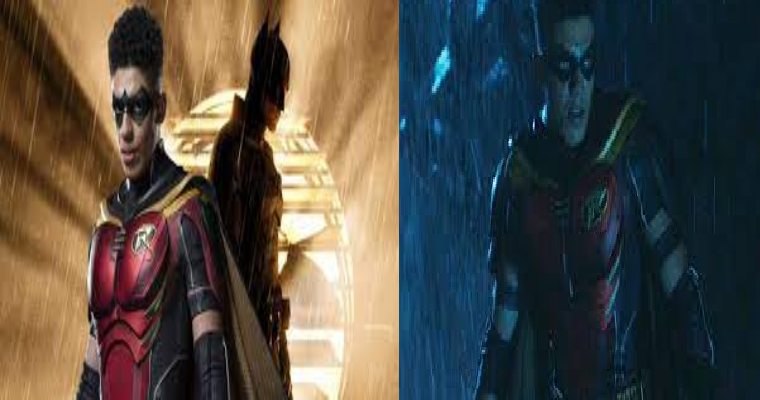“Heart on My Sleeve” went viral and stoked panic within the music industry. It’s also the latest example in a long history of devaluing Black music.
 Drake, pictured performing in D.C. in 2018, has been the “inspiration” for a handful of AI-generated songs. (Photo by Kyle Gustafson/For The Washington Post)
Drake, pictured performing in D.C. in 2018, has been the “inspiration” for a handful of AI-generated songs. (Photo by Kyle Gustafson/For The Washington Post)
The song sparked a panic within the music industry in a way that none of the previous AI-generated tracks did, perhaps because of its popularity. It received more than 15 million views on TikTok and 600,000 streams on Spotify, numbers that would seem to be more than just listener curiosity. The reason those numbers aren’t higher is that “Heart on My Sleeve” has since been removed from all digital service providers following a complaint by Universal Music Group, who released a statement on April 17 condemning “infringing content created with generative AI.” In a statement to Billboard, the label starkly set the table for upcoming debates over AI by asking “which side of history all stakeholders in the music ecosystem want to be on: the side of artists, fans and human creative expression, or on the side of deep fakes, fraud and denying artists their due compensation.”
That’s the very big picture. But what about looking at “Heart on My Sleeve” specifically? First off, calling it a hit hip-hop record is akin to calling a hot dog a sandwich; there may be all the prerequisite elements of a song composition, but the whole remains insufficient. The looped staccato production is dissonant, dated, and poorly mixed, a far cry from the current era of either Drake or the Weekend’s sonic tastes; the vocals are absent the character that animates both artists. The lyrics, written by the still-anonymous Ghostwriter, are sophomoric, and the delivery inorganic, with paint-by-numbers metaphors and misogyny that veers away from the syntactic detail that gives both artists’ songs their uniquely incisive texture. “Talking to a diva” is a far cry from “Courtney from Hooters on Peachtree”; the narrative detail from Drake give you an immediate sense of not only geographic location, but also image, style and aesthetic. New attempts are providing even worse results.
The scale to which a greater populace is insistent that the record is comparable to an original record is more a matter of wish fulfillment than a reflection of the generative tool’s capabilities for artistic expression. AI has been hyped as a novel phenomenon, but the core processes behind the generative model with respect to music are fairly entrenched in American music history: the idea that Black musical creation is unartistic and easily reproducible for profit while removing Black architects of the sounds.
It is the foundation of much of copyright and intellectual property disputes in music: jazz musicians couldn’t copyright their arrangements because they were “too improvisational,” only to have their songs copied by White artists measure for measure; Little Richard had his music poorly covered by Elvis Presley and Pat Boone to more sales. The idea, ultimately, is to remove Black people from their own cultural productions.
Law professor K.J. Greene wrote that “the history of Black artists within U.S. IP law has been one of appropriation, degradation, and devaluation beginning with the creation of the nation until the 1950s and 60s.” Greene’s point of contention was that Black artists have consistently been penalized for innovating in the public sphere, rendering Black creativity as public domain. “Black artists had no input in [copyright law], and examination reveals that it is in some respects incompatible with Black cultural production in music,” Green continues. “I contend that this standard provided less protection to innovative black composers, whose work was imitated so wildly it became ‘the idea.’”
Compare the difference in reaction to “Heart on My Sleeve,” which was being passed off as a work of original art, compared with that of AIsis, a collection of songs using AI-generated vocals by Liam Gallagher to imagine Oasis songs recorded in the 1990s. The creators of those songs are open about the science-experiment nature and fan-service element of their work. The arrangements and lyrics were originally created for a band named Breezer, as opposed to being uniquely created as a form of blunt mimicry of what an Oasis song would sound like, automatically lending more musicality to the record and lessening the feeling of inauthentic pastiche that borders on mockery from records using mostly generative AI models. To achieve the closest approximation of a complete song, unsurprisingly, one has to be intimately familiar with the process of making music itself.
Fans who are enthusiastic about the future of generative AI models in music are misguided at best. As a musical genre and cultural hub, hip-hop is eternally innovative, having made great strides on autonomous and creative uses of technology to advance the landscape, from quick mix breakbeats on turntables to samples on an MPC drum machine, to digital recordings.
It takes only one listen to “Heart on My Sleeve” to hear what’s lost — the magic that comes with organic performances with the human voice; the patented ad-libs that become an artist’s signature, as well as a chart for a record’s emotional tempo; the flat notes that aren’t pitch corrected because the mistake fits the emotion of the song; the way some artists are known to rap just before or after the beat, finding unique pockets that become their signature cadence. What we’re left with is a rudimentary outline of what could passably serve as a singalong track for a musical network soap, and not the culmination of various cultural inflection points that can be easily recognizable to the trained ear. But then again, accuracy was never the intent. It’s mainstreaming obsolescence and erasure via soulless reanimations of Black life.



